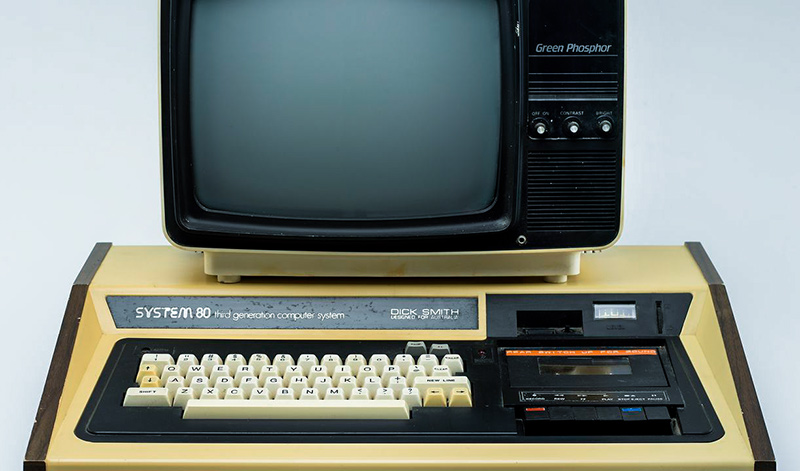Oh this brings back memories.
My first computer was a System 80 sold by D.Smith Electronics.
It was a TRS-80 compatible machine, running a Zilog Z80 microprocessor running at 1.79Mhz,
and running Level II BASIC on 16 kilobytes of RAM.
Programmes were stored on cassette tapes, yes C90's LOL, and read sequentially.
After teaching myself Basic, I worked out I could interface to the outside world via the 50 Pin Expansion Port
by learning Binary and interfacing via the Parallel Port, using Peek and Poke commands in Basic.
This enabled me to turn on LED's and other devices using a custom circuit board I build.
The Screen was the Classic "Green Phosphor" Display that displayed ASCII Characters.
This computer opened up many doors for me and later in Collage I was able to work with Apple IIe interfacing to real world by
designing applications and hardware like building Image scanners and Traffic control Simulators.
Not to mention the odd practical joke on the lecturers by rigging a command to full page dump endless
Dot Matrix Continuous Paper onto the ground before they had a chance to turn off the system.

Good 'Ol Days.
RB
(Not my photo but it's exactly like this and still fully functional).















